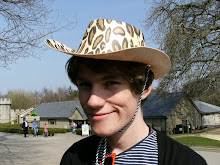
http://www.adammcdaniel.com/RichardAmsel1.htm
Richard Amsel was born in Philadelphia on December 4, 1947. He attended the Philadelphia College of Art, and, thanks in no small part to his winning HELLO DOLLY illustration, quickly found enormous popularity within New York's art scene.
The key to his success, beyond raw talent, was the unique quality of his work and illustrative style. Amsel could perfectly evoke period nostalgia (his posters for THE STING and westerns such as McCABE AND MRS. MILLER come to mind), while also producing somethin

g timeless and iconic, perfectly befitting both something old and something new. And however different his approach from one assignment to the other, all would bear his instantly recognizable stamp. Not to mention a damn cool signature:
"Amsel's work usually pays affectionate tribute to the past," one critic stated. "His style, however, is timeless and his attractive use of warm, glowing colors adds an even greater 'modernity' to his evocations of times and styles gone by."
Amsel himself said, "I'm interested in uncovering relationships between the past and the present, and in discovering how things have changed and grown. I don't see any point in copying the past, but I think the elements of the past can be taken to another realm." Such was the case with an early commission from RCA Victor, who asked the artist to create new artwork for their remastered recordings of Helen O'Connell, Maurice Chelalier, and Benny Goodman.
Amsel's illustrations then caught the attention of a young singer/songwriter named Barry

Manilow, who at the time was working with a newly emerging entertainer in cabaret clubs and piano bars. Manilow introduced the two, and it was quickly decided that Amsel should do the cover of her first Atlantic Records album.
The artist's cover for Bette Midler's The Divine Miss M presented the 5'2" entertainer as a sort of natural-born icon, and one would be hard pressed to argue that Amsel's subject didn't deserve such treatment.
More album covers soon followed, along with a series of magazine ads for designer Oleg Cassini, but it's Amsel's portraits of the fire-haired diva that remain the most popular.
Amsel continued illustrating movie posters, and for some of the most important and popular films of the 1970's: THE CHAMP, CHINATOWN, JULIA, THE LAST PICTURE SHOW, THE LAST TYCOON, THE LIFE AND TIMES OF JUDGE ROY BEAN, McCABE & MRS. MILLER, THE MUPPET MOVIE, MURDER ON THE ORIENT EXPRESS, NASHVILLE, PAPILLON

, THE SHOOTIST, and THE STING among them. (The latter's poster design paid homage to none other than Leyendecker.)
Though brief, Amsel's career was certainly prolific. By the decade's end his movie posters alone matched or exceeded the creative output of many of his contemporaries. Yet Richard Amsel was far more than just a movie poster artist.
His work graced the cover of TIME -- a portrait of comedienne Lily Tomlin, now housed in the permanent collection at the Smithsonian Institution in Washington D.C. In keeping with the magazine's stringent deadlines, Amsel's illustration was created in only two or three days.
The 1980's marked a dramatic change in movie marketing campaigns, with more and more employing photographs in favor of illustrations. Movie poster artists now faced a narrower field in which to compete, often limited to science fiction, fantasy, and adventure films. The old masters like Bob Peak -- whose bold, striking campaigns for CAMELOT, STAR TREK, SUPERMAN, and APOCALYPSE NOW helped redefine the very nature of movie poster art -- seemed increasingly dated in their style, and had to make way for a new generation of artists (notably Drew Struzan).
Yet Amsel remained productive, his trademark signature becoming a widely recognizable fixture on further magazine covers and movie posters, including such high profile, "event" films as the colorful, campy FLASH GORDON, the elaborate fantasy THE DARK CRYSTAL, and - of course - that action/adventure film with a grandstanding name, RAIDERS OF THE LOST ARK.
Amsel's output garnered numerous awards, from the New York and Los Angeles Society of Illustrators, a Grammy Award, a Golden Key Award from The Hollywood Reporter, and citations from the Philadelphia Art Director's Club.
His last film poster was for MAD MAX BEYOND THUNDERDOME, the third of George Miller's apocalyptic action movies with Mel Gibson. His final completed artwork was for an issue of TV Guide, featuring news anchors Tom Brokaw, Peter Jennings and Dan Rather.
Amsel worked with all sorts of mediums. He frequently used thin glazes of acrylic, like washes of watercolor, and then applied colored pencils and pastels. He'd then go back and forth, combining them little by little, layer upon layer, until the piece was completed to his satisfaction.


















































